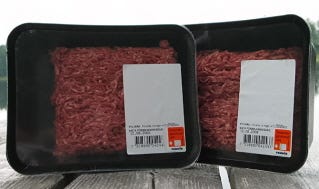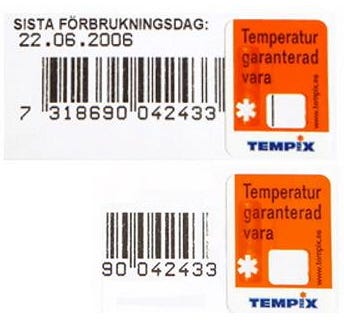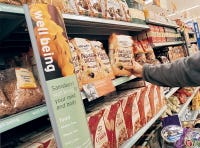Food Safety - Temperature Sensitive Labels Destroy Barcodes
January 30, 2014
Recently packaging professionals were asked to rate the importance of 10 factors when developing new packaging, with a score of one indicating little effect and five a high effect. As in previous years, food safety is the top consideration, with cost, product protection and preservation following suit.
 That’s not an amazing result really, as recent outbreaks of illnesses due to food borne pathogens such as Escherichia coli O157:H7, Salmonella spp., and Listeria monocytogenes, propelled the growing importance of food safety among consumers and retailer interest in reducing losses from un-saleable products caused by oxidation and temperature abuse in the supply chain.
That’s not an amazing result really, as recent outbreaks of illnesses due to food borne pathogens such as Escherichia coli O157:H7, Salmonella spp., and Listeria monocytogenes, propelled the growing importance of food safety among consumers and retailer interest in reducing losses from un-saleable products caused by oxidation and temperature abuse in the supply chain.
Although time-temperature labels are a well-known phenomena in the packaging industry, they all have the problem that the colour changes are not visible for the consumer, and that they go back to there original status in case the product goes back within the pre-set temperature range.
Tempix of Sweden currently launched a new temperature indicator that destroys barcodes on labels if the foodstuff or other temperature sensitive products are exposed to too high a temperature.
What is unique about the Tempix solution is that it is coupled to the barcode on the price tag. If the product has been exposed to too much heat, liquid flows over the barcode destroying it, making it illegible for the scanner.
The piece of goods reaches the customer, who by the naked eye can read off the Tempix temperature indicator. Furthermore, the bar-code becomes blocked if the product has been mistreated temperature-wise, which prevents purchase at the cash-counter.
The Tempix time/temperature indicator is built up from an absorbent (paper label) and a container/label cover including an activator. The activator migrates in the paper when the set temperature is exceeded and erases the bar-code and the optical signal bar after the time period stipulated. Temperature ranges between -30 to +30 °C (-22 to +86 °F) with an accuracy of ±0,5 °C (±0,9 °F).
 The Tempix system is implemented in the ‘real-world’ by ICA (Inköpscentralernas aktiebolag), one of the leading retail business companies in Scandinavia with about 2 300 dealer-owned and own retail shops in Sweden and Norway. Since, according to the company, quality is a prestige word to them, it was natural to participate in the project for a new temperature indicator.
The Tempix system is implemented in the ‘real-world’ by ICA (Inköpscentralernas aktiebolag), one of the leading retail business companies in Scandinavia with about 2 300 dealer-owned and own retail shops in Sweden and Norway. Since, according to the company, quality is a prestige word to them, it was natural to participate in the project for a new temperature indicator.
ICA likes the simplicity of the concept. When the label is on a product, shops are not required to invest.
Once the price and/or barcode label together with the indicator is placed on the goods, no advanced technical equipment is needed to control that the right temperature has been kept. Tempix reveals any shortcomings. The temperature indicator works both as a receipt and a guarantee. If something is wrong, it can be seen by the naked eye. For the consumer, the temperature indicator becomes a guarantee to have confidence in the shelf-life of the goods. For the partners in the supply chain the advantage is that the indicator automatically moves the responsibility for the product to the next stage in the chain. If it is unaffected upon delivery, accordingly, any problem must have occurred later. Hence, it is not possible to plead that something has happened at an earlier stage.
 When you decide to create a dictionary, you know in advance that it never will be complete. Day-to-day life, developments and innovations create new products, words and abbreviations. Therefore the packaging dictionary I posted on my blog will be under perpetual construction, adding new definitions daily. However the result, as it is, is worth a visit. Looking for a definition in the wide world of packaging? Visit Packaging Dictionary at Best In Packaging.
When you decide to create a dictionary, you know in advance that it never will be complete. Day-to-day life, developments and innovations create new products, words and abbreviations. Therefore the packaging dictionary I posted on my blog will be under perpetual construction, adding new definitions daily. However the result, as it is, is worth a visit. Looking for a definition in the wide world of packaging? Visit Packaging Dictionary at Best In Packaging.
Advice, suggestions, additions and comments are always welcome.
About the Author(s)
You May Also Like


